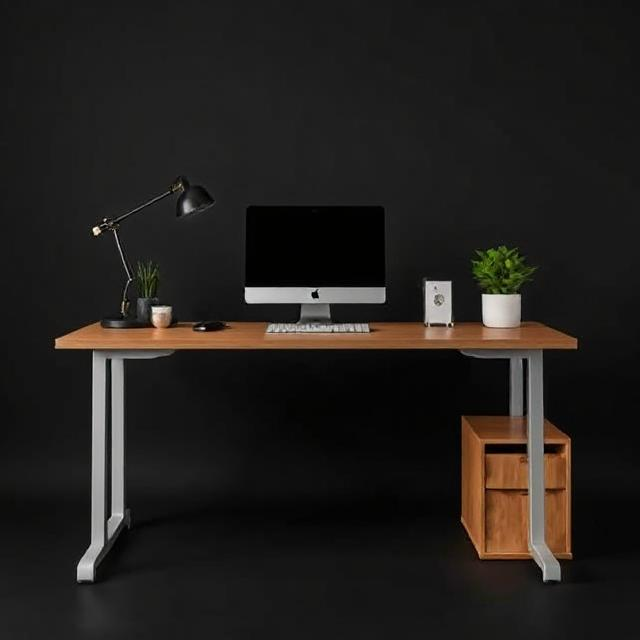Your cart is currently empty!

Standing desks have become one of the hottest trends in modern office design. Promoted as a solution to the health risks of sitting for long periods, they’re now a common feature in both corporate and home offices. But is the hype justified? Let’s explore the real benefits, drawbacks, and considerations to help you decide whether a standing desk is right for you.
The Case for Standing
Sitting for extended hours has been linked to a range of health issues—from obesity and heart disease to back pain and poor posture. Standing desks aim to combat these issues by encouraging more movement throughout the workday.
Key Benefits:
- Improved posture: Standing naturally aligns your spine better than slumping in a chair.
- More energy: Many users report feeling more alert and less sluggish when alternating between sitting and standing.
- Calorie burn: While the difference is modest, standing burns slightly more calories than sitting, contributing to long-term health benefits.
- Reduced back and neck pain: Standing desks, especially when combined with an anti-fatigue mat, can reduce pressure on the lower back.
The Right Way to Use a Standing Desk
Simply standing all day isn’t healthy either. The real key is alternating between sitting and standing throughout the day. Many experts recommend the 20-8-2 rule: 20 minutes sitting, 8 minutes standing, and 2 minutes of movement (stretching or walking).
A height-adjustable desk, either manual or electric, allows you to switch positions easily. For even more flexibility, consider a sit-stand converter, which sits on top of your current desk and can be raised or lowered.
What to Consider Before Buying
- Budget: Standing desks can range from $150 for a converter to $800+ for a full electric model.
- Workspace: Measure your space to ensure the desk fits comfortably. Standing desks can be heavier and bulkier.
- Ergonomics: Make sure your screen is at eye level and your wrists are neutral when typing.
- Accessories: Consider investing in a monitor arm, anti-fatigue mat, and adjustable chair to complete your setup.
Drawbacks to Be Aware Of
- Fatigue: Standing for too long without movement can cause foot pain and leg strain.
- Adjustment period: It takes time to get used to standing and finding the right balance.
- Distraction: For some, frequent position changes may interrupt workflow initially.
Conclusion
Are standing desks worth it? The answer is yes—if you use them correctly. When paired with a dynamic work routine that includes sitting, standing, and movement, they can offer major health and productivity benefits. Like any office upgrade, the key is mindful use and creating a setup that works for your body and workflow.
6. Choosing the Perfect Chair: A Buyer’s Guide for Every Office
Whether you work from home or run a busy corporate office, one piece of furniture stands out as absolutely essential: your office chair. It affects your posture, comfort, and even productivity. But with thousands of options available, how do you choose the right one?
Here’s a comprehensive buyer’s guide to help you make a smart, ergonomic, and long-lasting investment.
1. Understand Your Needs
Before browsing online or visiting showrooms, ask yourself:
- How many hours a day will I use the chair?
- Do I need it for heavy, daily use or occasional tasks?
- What’s my budget?
Your answers will determine whether you need a high-end ergonomic chair or a basic model with essential adjustments.
2. Prioritize Ergonomic Features
A chair that looks good isn’t enough—it must feel good, too. Look for these ergonomic essentials:
- Adjustable seat height to keep feet flat on the floor
- Lumbar support for your lower back curve
- Reclining and tilt lock for back flexibility
- Adjustable armrests to support shoulders and elbows
- Breathable materials like mesh or cushioned fabric for airflow and comfort
3. Consider Materials and Durability
Office chairs come in many finishes:
- Leather: Elegant and durable, but less breathable.
- Mesh: Excellent ventilation and modern aesthetic.
- Fabric: Soft, colorful, and often budget-friendly.
If you’re using the chair 8+ hours a day, invest in a higher-quality build with a solid warranty. Look for chairs rated for commercial use.
4. Fit Your Space and Style
Your chair should match the scale and style of your office. Bulky executive chairs might not suit a small home office. Choose models that can roll easily, fit under your desk, and match your overall decor.
You can even find stylish ergonomic chairs that blend into minimalist or Scandinavian workspaces—comfort doesn’t mean compromising design.
5. Test If Possible
If you’re shopping in-store, sit in several models. Adjust them fully and see how they feel. If buying online, choose retailers that offer flexible return policies or trial periods.
Top Picks by Use Case:
- For All-Day Use: Herman Miller Aeron or Steelcase Leap
- Budget-Friendly: FlexiSpot or Hbada ergonomic chairs
- Style-Focused: Branch or Humanscale models
- Heavy Duty: Chairs rated for 300+ lbs with extra support
Conclusion
Your office chair isn’t just a seat—it’s a foundation for productivity, posture, and even your mood. By choosing a chair tailored to your body, work style, and environment, you’re investing in comfort and performance that lasts for years. Don’t settle for less—your back will thank you.
